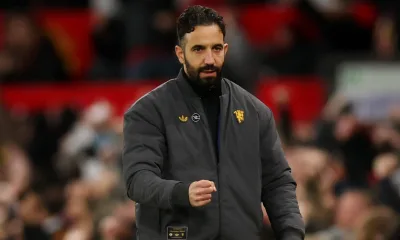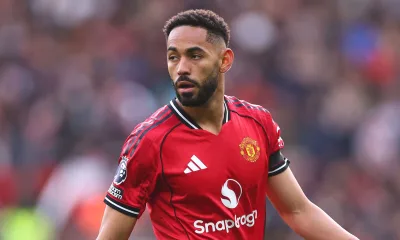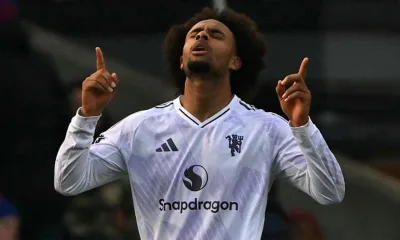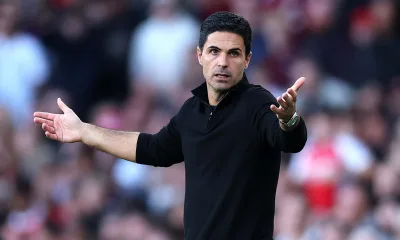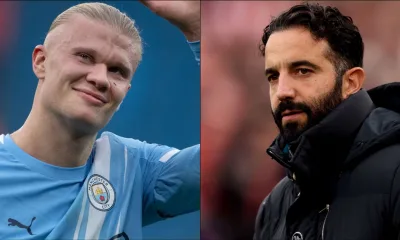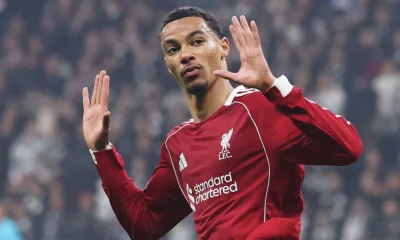Manchester United
Benjamin Šeško’s Expected Shirt Number at Manchester United
Benjamin Šeško’s expected Manchester United shirt number amid current squad allocations.

Manchester United have secured the signing of Benjamin Šeško following their unsuccessful pursuit of Viktor Gyökeres, outpacing Newcastle United in acquiring the Slovenian forward. Šeško is set to join the club for the 2025–26 season and beyond, but his shirt number at Old Trafford remains a subject of interest.
Šeško began his senior career at FC Liefering on loan from RB Salzburg’s academy, where he impressed wearing the No. 21 jersey, scoring 22 goals in 44 appearances. Upon returning to Salzburg’s first team, he was assigned the No. 30 shirt, which he retained throughout his time in Austria.
After moving to RB Leipzig in 2023, Šeško chose to keep the No. 30 shirt despite alternative numbers being available, making it his preferred number during his notable tenure there. At the international level for Slovenia, Šeško has worn the No. 25 and later the No. 11.
However, the No. 30 is currently occupied at Manchester United by summer signing Diego León, making it unlikely Šeško will inherit that number immediately. The iconic No. 9, traditionally worn by a centre forward, belongs to Højlund, while the No. 11 is taken by Zirkzee, who also plays as a forward.
Given these circumstances, Šeško will need to select a different number upon his arrival. His choice will be watched closely by supporters eager to see how this promising striker integrates into United’s squad.
Championship
United and Wrexham in talks for repeat pre-season friendly on proposed Scandinavia trip
United in talks with Wrexham for a repeat pre-season friendly on a planned Scandinavia trip in 2026
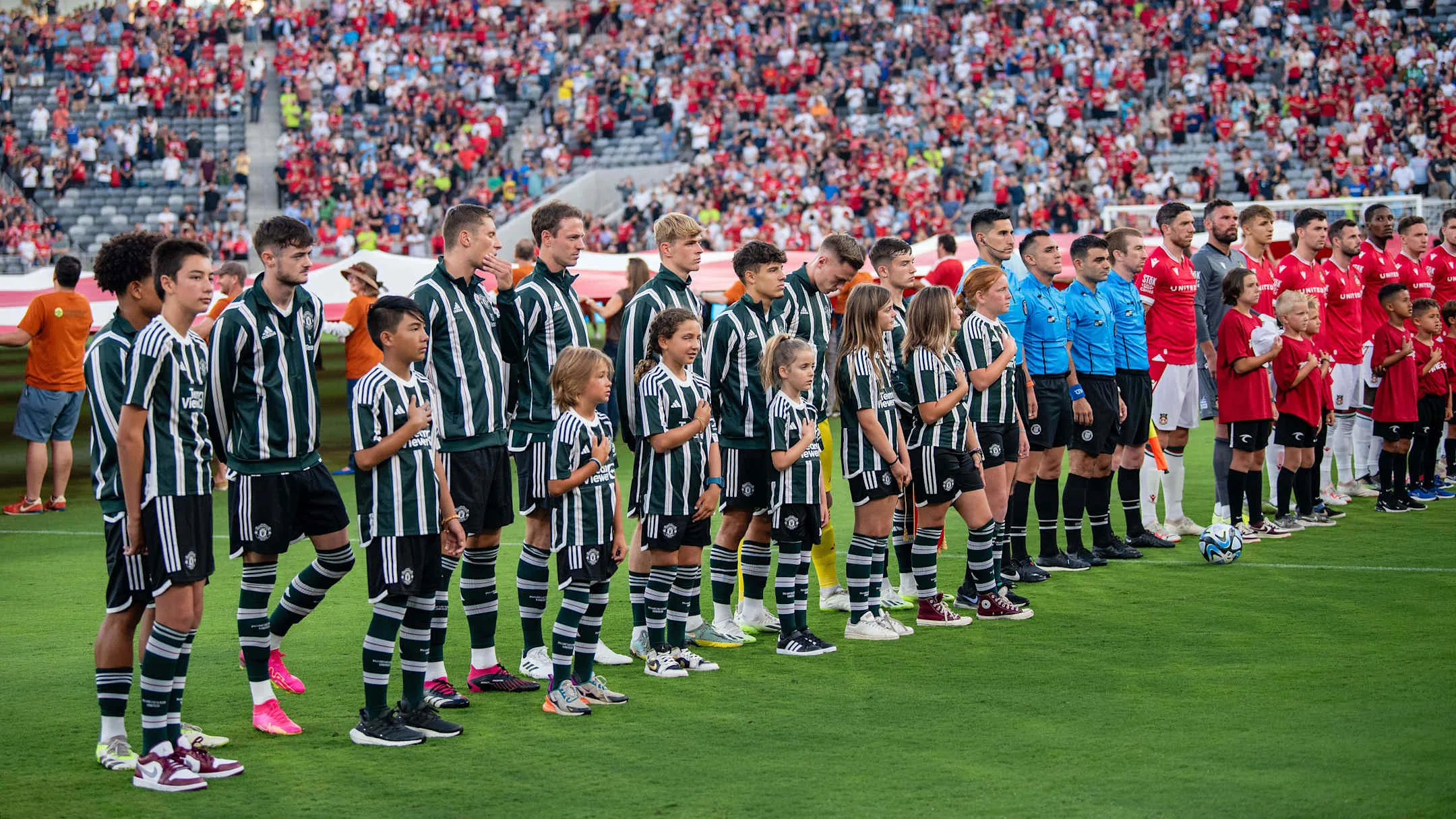
Manchester United are reported to be in discussions with Wrexham about a potential repeat of the sides’ dramatic friendly next summer. The previous meeting ended 3–1 to Wrexham and included a serious injury to striker Paul Mullin, who suffered a punctured lung and broken ribs following a challenge from young goalkeeper Nathan Bishop, who would leave United just weeks later.
According to the Daily Mail, United are interested in arranging another fixture with the Championship outfit. The proposed match is expected to be one of two friendlies during the Red Devils’ planned trip to Scandinavia, rather than the United States where the earlier meeting took place.
Club officials are debating how the 2026 World Cup might affect summer demand. Some believe the tournament will boost interest in matches that summer, while others fear fans will be fatigued by the time United begin friendlies. Ticket sales are central to that decision and reduced demand would likely prompt a different approach, given the significant logistical upheaval of a trip to the United States.
For Wrexham, the proposed friendly would provide a celebration following their first season back in the Championship. The Red Dragons had been among the title favourites during their time in the lower divisions but have since found themselves in a genuine battle in the second tier. The Championship is described as famously difficult to escape and often goes right down to the wire.
At the time the potential friendly was reported, Wrexham sit 14th in the Championship standings, four points adrift of the playoff places and 10 clear of the relegation zone. New investment from Apollo Sports Capital has been cited as a boost to the club’s long-term aim of reaching the Premier League and, potentially, meeting United at the top level.
Manchester United
Napoli Open to Assessing Loan Move for Kobbie Mainoo as Midfielder Seeks Minutes
Napoli open to assessing a loan for Kobbie Mainoo as he seeks more minutes away from United. in Jan.

Napoli have not dismissed the possibility of pursuing Kobbie Mainoo on loan as the Manchester United midfielder seeks regular playing time. Mainoo has struggled for minutes under Ruben Amorim and is reported to favour a temporary move abroad when the January transfer window opens, with links to Napoli and Bayern Munich.
Napoli sporting director Giovanni Manna spoke to Sky Sport Italia about the club’s potential involvement, suggesting any approach would be evaluated. “He is a player who has been linked to Napoli since August, also for his age, his potential, and the transfer opportunity,” Manna said. “This team is doing well, it is consolidated. We have some important absences right now, but sooner or later the lads will return, strong and determined. We have to make the right evaluations, so we’ll see how things progress along the way.”
The interest is framed by recent business between the two clubs. Napoli have taken Scott McTominay and Rasmus Højlund from Manchester United in the past couple of years, moves that the Italian club will be conscious of as they weigh any further activity.
Reports in the Daily Mail indicate Mainoo has chosen Napoli as his preferred destination and that “at least 12 clubs” could show interest if Manchester United permit a loan. The player was thought to have been keen on a move to Naples over the summer as well. Any transfer is likely to depend on United’s willingness to engage and whether the club requires a replacement first. It has also been suggested a decision on Mainoo might be delayed until after Amad Diallo and Bryan Mbeumo return from the Africa Cup of Nations.
Mainoo’s limited appearances this season have prompted questions whenever Amorim has faced the media. On the topic, the United boss said: “I see it. I just want to win, I try to put the players, I don’t look who it is, I don’t care about that, I’m just trying to put the best players on the pitch,” reinforcing that selection is based on performance and team needs.
Barcelona
When Player-Manager Relationships Fractured: Five Dressing-Room Explosions
Five high-profile player-manager bust-ups that fractured teams: Keane, Beckham, Ibrahimović, Anelka, Pogba,
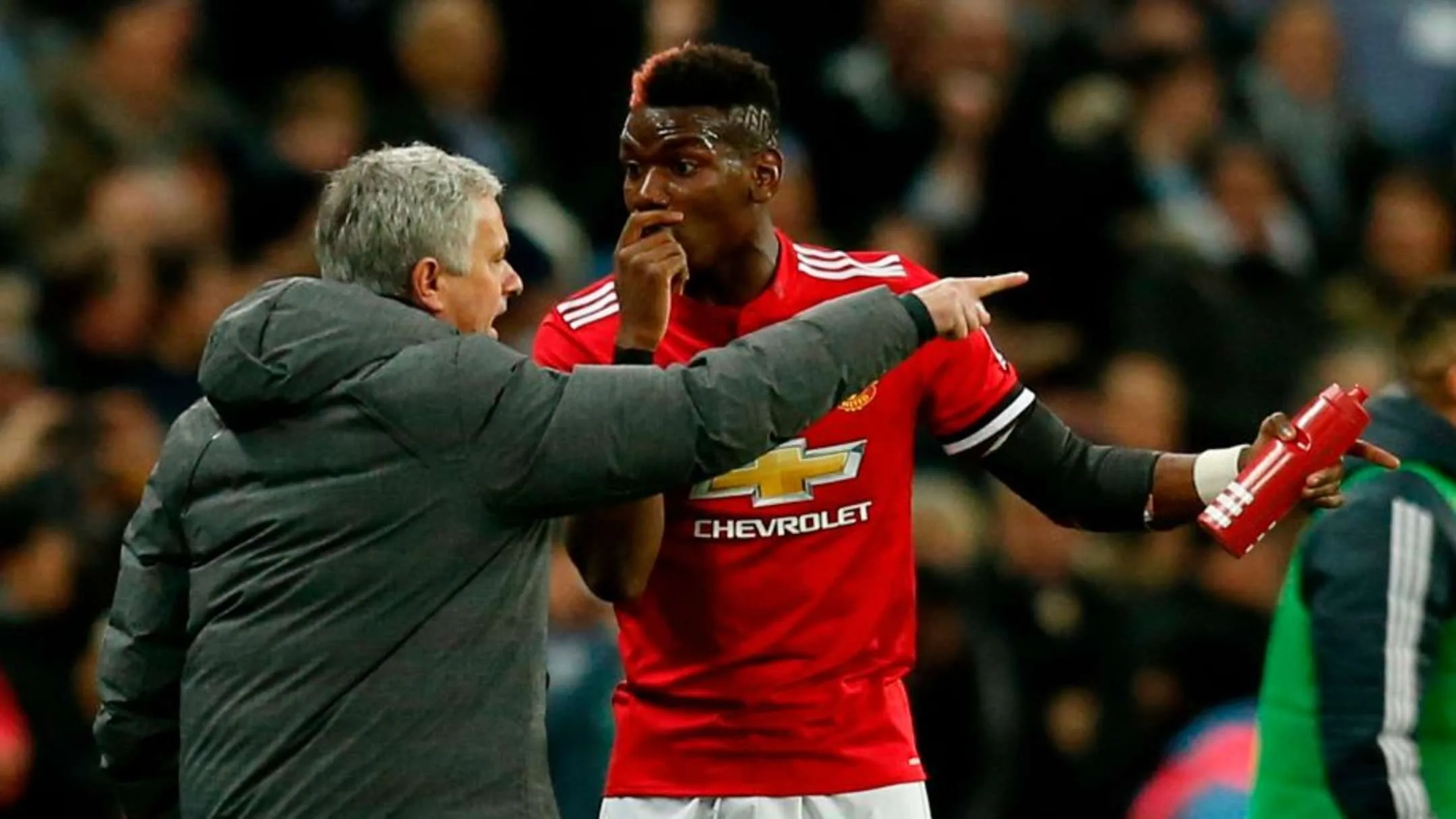
Few ruptures destabilise a team like a public falling-out between player and manager. Across international tournaments and club dressing rooms, such confrontations have reshaped squads and careers.
The 2002 Saipan incident remains one of the most notorious cases, so notorious a film was made about it starring Steve Coogan. Roy Keane publicly confronted Republic of Ireland manager Mick McCarthy over pre-tournament preparations in Saipan. The argument spilled out in a team meeting and exploded into a venomous outburst: “Mick, you’re a liar … you’re a f—– w—–,” Keane barked. “I didn’t rate you as a player, I don’t rate you as a manager, and I don’t rate you as a person. You’re a f—– w—– and you can stick your World Cup up your a—. The only reason I have any dealings with you is that somehow you are the manager of my country!” Keane did not play at that World Cup and did not return to international duty until McCarthy’s dismissal.
At Manchester United tensions between David Beckham and Sir Alex Ferguson reached a physical flashpoint in February 2003 after an FA Cup fifth round defeat to Arsenal. Ferguson kicked a boot that struck Beckham above the eye, leaving a cut. Beckham wore a small plaster on his eyebrow at his next public appearance. The season ended with Beckham leaving Old Trafford for Real Madrid.
Zlatan Ibrahimović’s time at Barcelona collapsed after a dressing-room confrontation with Pep Guardiola following a Champions League semi-final defeat to Bayern Munich. “Guardiola was staring at me and I lost it,” Ibrahimović said. “I thought, ‘there is my enemy, scratching his bald head!’ “I yelled: ‘You haven’t got any b—-!’ and worse than that I added: ‘You can go to hell!’ I completely lost it, and you might have expected Guardiola to say a few words in response, but he’s a spineless coward.” Ibrahimović moved on loan to AC Milan and later completed a permanent transfer.
France’s 2010 World Cup campaign also featured a midgame bust-up. At halftime of the group defeat to Mexico, Nicolas Anelka allegedly told manager Raymond Domenech: “Go f— yourself, you son of a w—-.” He was substituted and subsequently sent home.
Finally, the Pogba-Mourinho relationship at Manchester United deteriorated after public disagreement over the team’s approach in 2018–19. Mourinho reportedly told Pogba he would never captain the Red Devils and later labelled him a “virus” that “kills the mentality of good, honest people.” Pogba was left out of a squad and Mourinho was sacked following a defeat to Liverpool.


